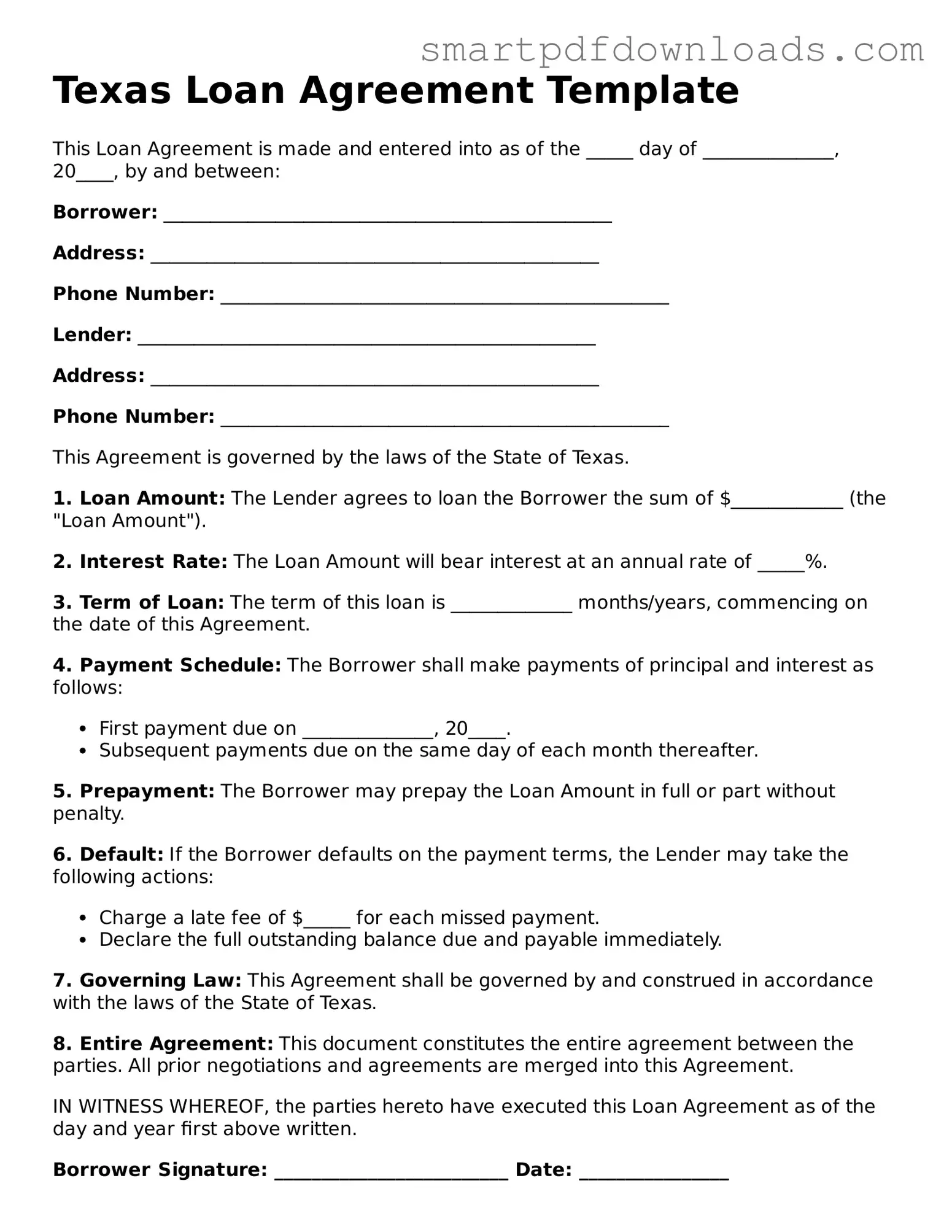Texas Loan Agreement Template
This Loan Agreement is made and entered into as of the _____ day of ______________, 20____, by and between:
Borrower: ________________________________________________
Address: ________________________________________________
Phone Number: ________________________________________________
Lender: _________________________________________________
Address: ________________________________________________
Phone Number: ________________________________________________
This Agreement is governed by the laws of the State of Texas.
1. Loan Amount: The Lender agrees to loan the Borrower the sum of $____________ (the "Loan Amount").
2. Interest Rate: The Loan Amount will bear interest at an annual rate of _____%.
3. Term of Loan: The term of this loan is _____________ months/years, commencing on the date of this Agreement.
4. Payment Schedule: The Borrower shall make payments of principal and interest as follows:
- First payment due on ______________, 20____.
- Subsequent payments due on the same day of each month thereafter.
5. Prepayment: The Borrower may prepay the Loan Amount in full or part without penalty.
6. Default: If the Borrower defaults on the payment terms, the Lender may take the following actions:
- Charge a late fee of $_____ for each missed payment.
- Declare the full outstanding balance due and payable immediately.
7. Governing Law: This Agreement shall be governed by and construed in accordance with the laws of the State of Texas.
8. Entire Agreement: This document constitutes the entire agreement between the parties. All prior negotiations and agreements are merged into this Agreement.
IN WITNESS WHEREOF, the parties hereto have executed this Loan Agreement as of the day and year first above written.
Borrower Signature: _________________________ Date: ________________
Lender Signature: __________________________ Date: ________________
